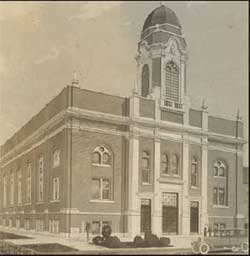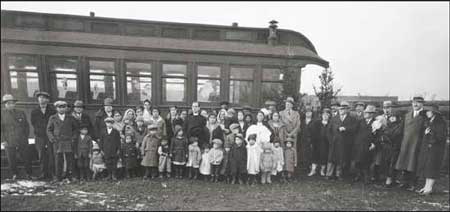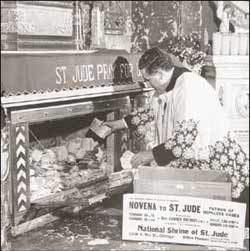Devotees Flock to St. Jude

During the Lenten season of 1929, Father Tort noticed many of his parishioners praying before the statue of St. Jude. When the statues in the church were covered with purple drape during Holy Week, he quietly moved the statue of St. Jude to a place of prominence above an altar on the right side of the church.
The congregation at Our Lady of Guadalupe Church showed such great response to the devotion to St. Jude that an overflow crowd attended services on the final night of a solemn novena that ended on the saint’s feast day, Oct. 28, 1929, one day before the stock market crashed. More than 1,000 people stood outside the church to hear the service.
Eventually some money came into the church—never enough to guarantee security but enough to continue the spiritual and social-welfare endeavors of the parish and help in completion of the church in which a modest shrine to St. Jude was finally established.
Word of the devotions to St. Jude gradually spread from that tiny corner of Chicago to other parts of the country. During the Great Depression of the 1930s and during World War II, thousands of men, women, and children attended novenas at the shrine; and devotion to the patron saint of hopeless causes spread throughout the country.

Fr. James Tort, C.M.F., with a group of Mexican immigrants outside a railroad coach
for a Christmas party with Our Lady of Guadalupe Mission in Chicago (1926)
The majority of St. Jude patrons cannot personally attend novena services (which begin on a Saturday afternoon and end nine days later on a Sunday night). Therefore office of the National Shrine of St. Jude in Chicago distributes novena literature throughout the country to devotees who want to pray the novena by reading the prayers at home or elsewhere.
To this day, the letters that pour into the National Shrine of St. Jude provide inspiring testimony to the desire of the faithful to unite themselves with God through prayers to St. Jude.

The late Father Joachim DePrada, C.M.F., one of the successors to Father Tort as director of the National Shrine, once commented, “The continued interest in Saint Jude indicates the hand of Providence at work. The change that St. Jude has wrought in the spiritual lives of many thousands of persons substantiates this belief.”
Fr. Joachim DePrada
places petitions at
the St. Jude altar.
(1951)
